Like most Oregonians, I cherish the McKenzie River. The McKenzie has a special place in my heart. For the past 30 years it’s where I’ve spent the most time. As a father of two young children, as owner of The Caddis Fly angling shop and as a licensed river guide, I’m lucky to spend around 125 days a year on the McKenzie in some capacity.
Many Oregonians and tourists from near and far flock to the one-of-a-kind McKenzie River to enjoy its beauty. The crystal clear water, the beautiful forests along its banks, and its varied flows make the river an ideal place to fish, raft, hike along, and just plain enjoy life.
As the owner of a fishing business, I depend on the McKenzie and its tributaries — and the current state of the fishery and fish management on the McKenzie troubles me. In particular, I’m concerned about our most-prized and sought after fish: wild spring chinook salmon. The chinook is the king of the McKenzie. It is the anchor to this fantastic west Cascades stream — the ecosystem’s most critical native.
However, wild spring chinook are struggling to survive. Since 1999, they have been listed by federal agencies as threatened with extinction. The McKenzie is the best and last hope in the Willamette basin to save this incredibly unique and important run of salmon.
The state Department of Fish and Wildlife claims that its No. 1 priority is to maintain and improve wild spring chinook salmon in the McKenzie. However, you might be surprised to learn that in the years since the listing of the wild spring chinook as threatened, the department has continued hatchery operations that harm wild spring chinook without an open, public assessment of how its hatcheries are run.
Each year, the department breeds and releases more than 1 million hatchery-raised chinook salmon into the McKenzie. But for at least a decade, fish biologists — including those within the department — have noted that hatchery fish have harmful effects on the survival of wild fish.
On the McKenzie, hatchery chinook compete for food and habitat with wild chinook. They also breed with wild chinook, diluting their genetic integrity. Yet we continue to dump millions of dollars into a hatchery fish operation that damages our wild stocks, diminishes the appeal of the McKenzie, and negatively affects local businesses that rely on the river — all without a full study of the impacts.
Last year, the return of wild spring chinook to the McKenzie was one of the worst I’ve seen. Few of these amazing fish spawned in their historical spots. They simply weren’t there.
I know that the dams in the McKenzie basin and other factors, such as ocean conditions, can affect the size of wild spring chinook runs. But I see no reason to add insult to injury by continuing a business-as-usual hatchery operation that science has proven even further harms these beautiful fish. Wild salmon will not recover overnight, but we have to do something about the current situation because what we’re doing now simply isn’t working.
I strongly support the efforts of conservationists like McKenzie Flyfishers to get the state to operate its hatchery with due regard for the survival of wild spring chinook.
That means the state must get either approved hatchery management plans or federal permits to ensure that hatchery operations are consistent with efforts to restore wild spring chinook. While some may continue to disagree, science has proven — and the last 40 years of hatchery operations confirm — that trying to replace native runs of wild fish with hatchery-produced fish just does not work.
Imagine a McKenzie River that featured a fishery that is all native and wild. It would immediately draw the attention of anglers, naturalists and other people around the nation who truly care about preserving and enjoying a pristine river.
Imagine seeing our river’s most valued fish species return in improved numbers year after year, until the native wild runs support a harvestable fishery without augmentation. Think about how many anglers would come to the McKenzie to enjoy its wild attributes.
If you think this is a radical approach, think again: Montana and Idaho have stopped stocking of hatchery fish in prized streams, resulting in both recovered wild fish stocks and booming guide and tourism businesses.
I call upon Oregon’s Fish and Wildlife Department and other agencies to conduct a thorough analysis of the impact of the hatchery on the McKenzie River.
It is a critical component necessary for us to achieve bringing back wild chinook salmon to our special river.




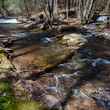
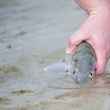





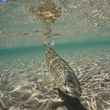




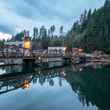





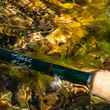



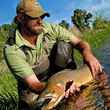
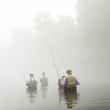

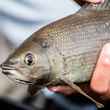
Comments
Anonymous replied on Permalink
I like your article, insight, and care for wild Chinook in the McKenzie. However, primary emphasis should also be on getting Chinook back into their historic habitat above Cougar Dam in the beautiful SF McKenzie. This is spring Chinook habitat-- there is no better! Used to support 1,000's of wild fish. Going to take all interests and groups advocating for fixes to Cougar dam.
ginkthefly replied on Permalink
Well, either action would demonstrate Oregon prioritizing wild fish over lab-grown planted versions, which is the opposite of their current priorities. OR isn't alone in this, it is rampant. Hopefully a trend towards managing for wild fish will flow from the growing trend for dam removal.
Pages